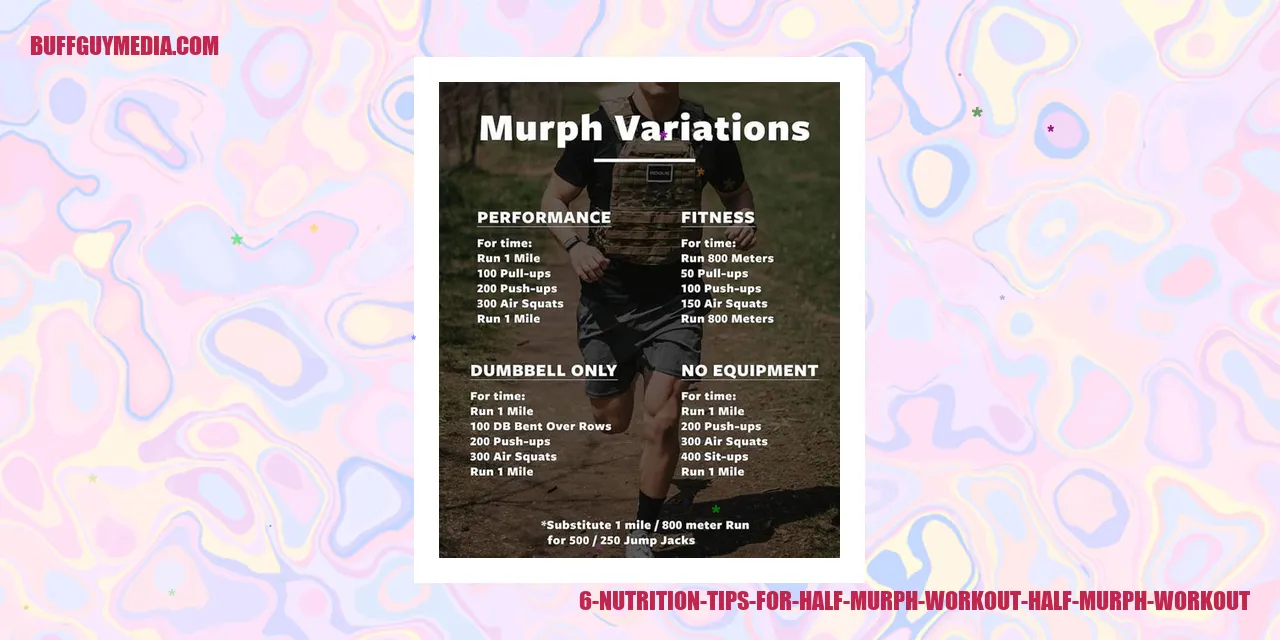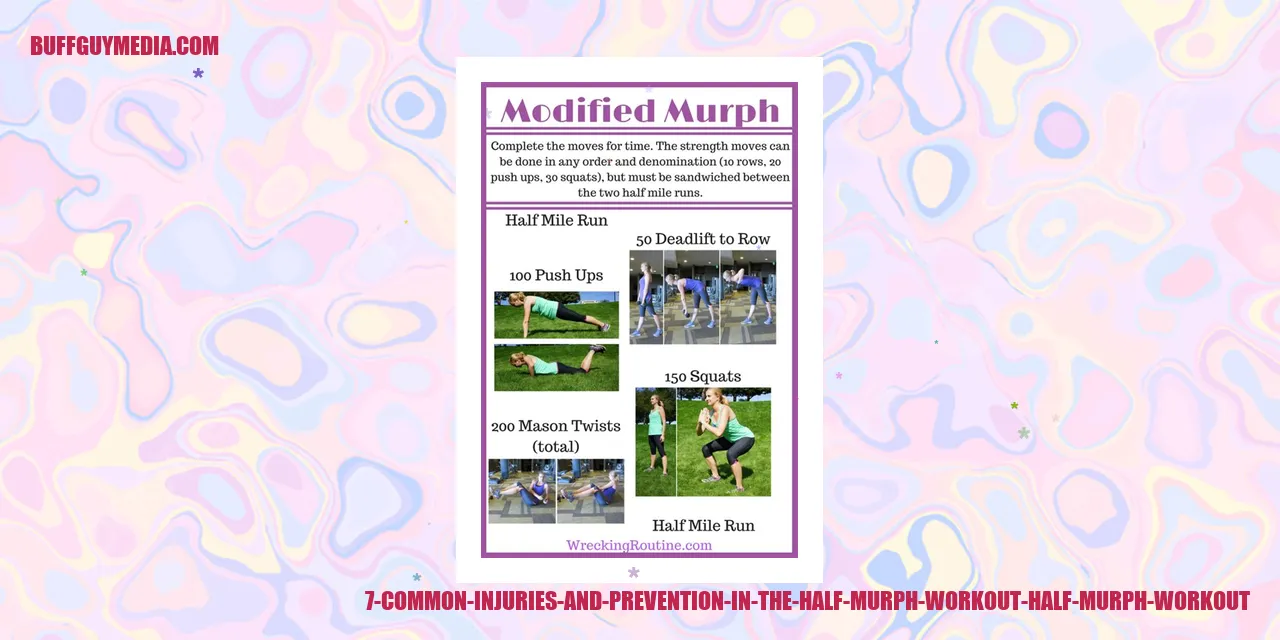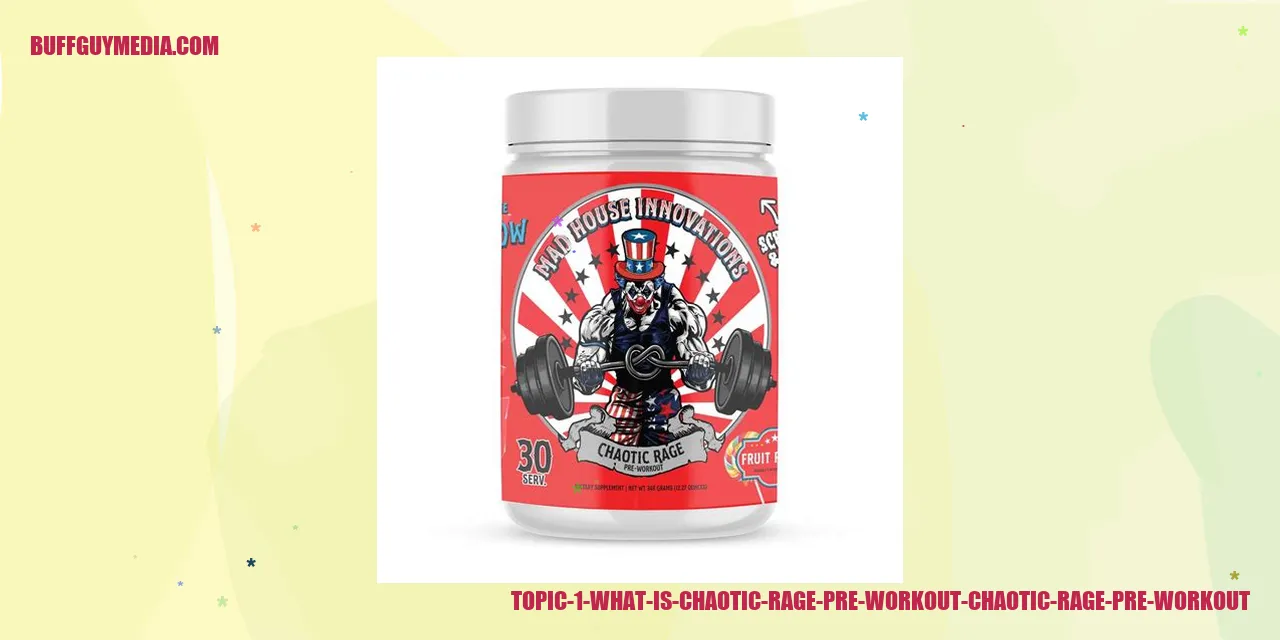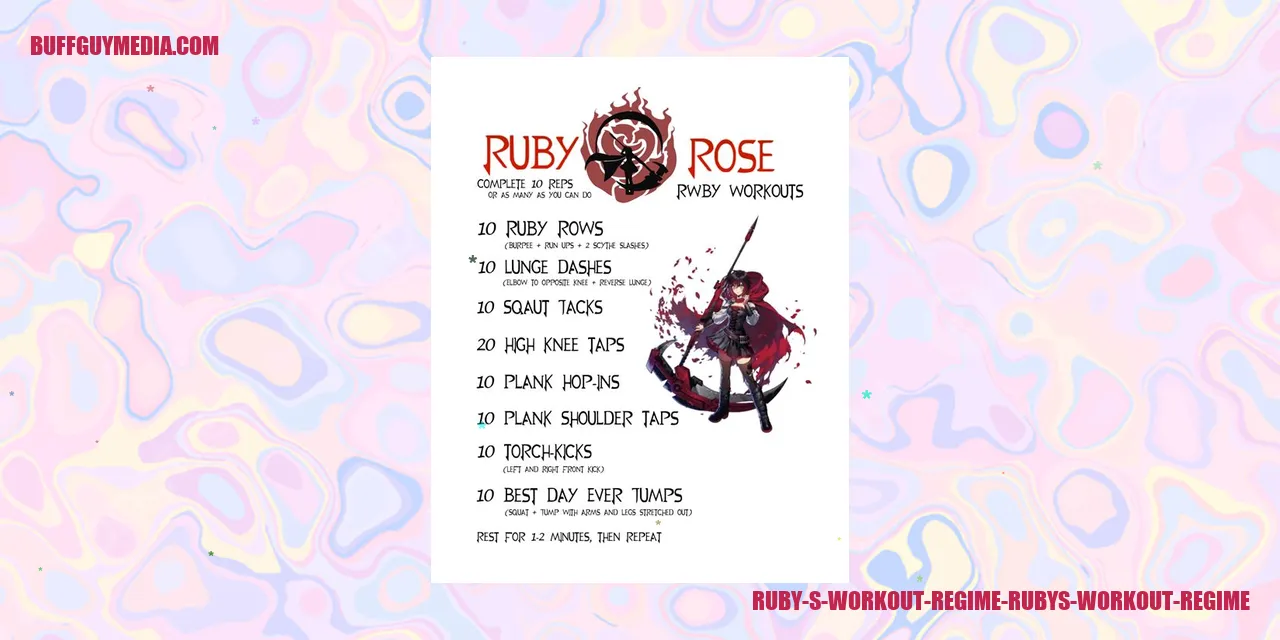Half Murph Workout: A Challenging CrossFit WOD for a Powerful Body
Embark on a Journey of Fitness with the Half Murph Workout
Understanding the Half Murph Workout
Are you looking for a challenging workout that targets your entire body? Look no further than the Half Murph Workout, a modified version of the famous CrossFit routine named after Lieutenant Michael P. Murphy. By combining running, bodyweight exercises, and endurance training, this workout promises to put you to the test both physically and mentally.
The Advantages of the Half Murph Workout
When it comes to achieving optimum fitness and mental resilience, the Half Murph Workout delivers excellent results. Through a combination of high-intensity exercises like running, push-ups, pull-ups, and squats, this workout helps build strength, improve cardiovascular endurance, and enhance overall fitness levels. In addition, the Half Murph Workout has been known to boost metabolism, burn calories, and support weight loss goals.
Engaging in the Half Murph Workout on a regular basis allows you to cultivate mental toughness, discipline, and determination. By pushing your limits during this demanding routine, you develop the qualities of resilience and perseverance, attributes that can positively impact various aspects of your life.
Mastering the Half Murph Workout
To perform the Half Murph Workout effectively and safely, follow these step-by-step instructions:
[[READMORE]]
1. Warm-Up: Begin your workout by engaging in a dynamic warm-up routine. This should consist of stretches, light jogging, and mobilization exercises aimed at preparing your muscles and joints for the upcoming challenges.
2. Run: Start with an 800-meter or half-mile run at a moderate pace. This run serves as a warm-up for the subsequent exercises and provides a cardiovascular foundation.
3. Bodyweight Exercises: Proceed to the bodyweight exercises. Complete the following exercises consecutively, aiming for maximum repetitions:
– 50 push-ups: Execute each repetition with precision, ensuring your chest touches the ground and your arms fully extend at the top of each movement.
– 100 air squats: Adopt a hip-width stance, lower yourself until your thighs are parallel to the ground, and fully extend at the top of each repetition.
– 50 pull-ups: Utilize an assisted machine, resistance bands, or opt for modified pull-ups if necessary.
4. Run: Conclude the workout with another 800-meter or half-mile run, maintaining the same pace you started with.
Essential Tips for a Successful Half Murph Workout
To make the most of your Half Murph Workout experience, consider the following tips:
– Prioritize Proper Form: Throughout the workout, prioritize maintaining proper form to prevent injuries. Focus on executing each repetition correctly, rather than rushing through the exercises.
Also read:
Madonna Weight Gain: The Untold Story Behind Her Transformation
V1X Pre Workout: The Ultimate Performance Enhancer for Intense Workouts
– Tailor the Workout: If needed, modify the Half Murph Workout by reducing the number of repetitions or adjusting the exercises to suit your fitness level.
– Stay Hydrated: Adequately hydrate yourself by consuming sufficient water before, during, and after the workout. This ensures optimal performance and aids in recovery.
– Listen to Your Body: Pay attention to your body’s signals and take breaks as necessary. Striving for improvement is essential, but it’s equally crucial to avoid overexertion and injuries.
– Track Your Progress: Maintain a record of your Half Murph Workout duration and repetitions to track your progress. This allows you to challenge yourself and monitor your growth.
Incorporating the Half Murph Workout into your fitness routine guarantees a comprehensive workout that pushes your boundaries and brings you closer to your ultimate fitness goals. Embrace the challenge, stay committed, and unlock your potential with the Half Murph Workout!

Exploring Adaptations for the Half Murph Workout
Scaling Down the Half Murph Workout
The Half Murph Workout, a challenging CrossFit routine consisting of a 1-mile run, 50 pull-ups, 100 push-ups, and 150 air squats, may be too demanding for beginners or those with physical limitations. However, individuals can still benefit from the workout by making modifications to match their current fitness abilities.
For beginners, reducing the running distance to 800 meters or even 400 meters is a good starting point. Additionally, assisted variations or using resistance bands can be used to modify pull-ups, push-ups, and air squats, thereby reducing the difficulty level. This approach allows individuals to participate in the workout while gradually building strength and stamina.
Enhancing the Half Murph Workout
If you seek a more intense Half Murph Workout experience, there are several ways to challenge yourself further. One option is to incorporate a weighted vest throughout the routine. The added resistance increases the difficulty of each exercise, providing a greater muscle and cardiovascular workout.
Another modification to intensify the Half Murph Workout involves performing strict pull-ups instead of kipping pull-ups. Strict pull-ups require more upper body strength and control, accentuating muscle activation and increasing the overall challenge of each repetition.
Alternatives to the Half Murph Workout
If the Half Murph Workout doesn’t align with your fitness goals or individual circumstances, there are alternative routines that can provide similar benefits. One option is to try a half Murph-style circuit, where you complete half the repetitions for each exercise but perform multiple rounds. This adaptation maintains intensity while reducing the overall workload.
Alternatively, High-Intensity Interval Training (HIIT) workouts can be a suitable substitute. Crafting a workout that incorporates running, pull-up variations, push-ups, and air squats in a high-intensity interval format delivers comparable metabolic benefits while catering to different fitness levels and preferences.
Combining the Half Murph Workout with Additional Exercises
Variety plays a crucial role in keeping your fitness routine engaging and challenging. By integrating the Half Murph Workout with other exercises, you can create a comprehensive full-body workout. Consider incorporating exercises such as kettlebell swings, burpees, or lunges into your routine.
This combination allows you to target different muscle groups and introduce an element of surprise to your training. While the Half Murph Workout serves as an excellent foundation, the additional exercises provide diversity, preventing training plateaus and encouraging continuous progress.

The Path to Conquering the Half Murph Workout
Preparing Your Body for the Half Murph Challenge
The Half Murph Workout presents a intense physical test that combines running with bodyweight exercises. This modified version of the original Murph Workout, inspired by Lt. Michael P. Murphy, demands dedication and commitment. To ensure success and prevent injuries, it is crucial to adequately prepare your body.
Prioritize Dynamic Warm-Up
Before diving into the Half Murph Workout, make sure you warm up your muscles and enhance your body’s flexibility. Engage in dynamic warm-up exercises such as jumping jacks, high knees, lunges, arm circles, and squats to activate your muscles and optimize your range of motion.
Focus on Strength and Conditioning
Developing strength and conditioning is key for completing the Half Murph Workout. Incorporate a range of exercises in your training routine to target different muscle groups. Include movements like push-ups, squats, sit-ups, burpees, and pull-ups to build overall body strength. Gradually increase the number of repetitions and sets as you improve your stamina and overall fitness level.
Embrace the Power of Stretching
Stretching is an essential part of any workout routine, as it enhances flexibility, prevents injuries, and improves muscle recovery. After completing the Half Murph Workout or any intense exercise, allocate time for stretching. Focus on stretching your hamstrings, quads, calves, chest, and shoulders to alleviate tightness and balance your muscles.
Building Stamina for the Half Murph Workout
Start with a Steady Tempo
Gradually building stamina for the Half Murph Workout involves starting at a comfortable pace. Begin by covering shorter distances during your runs and performing a manageable number of repetitions for each exercise. As your fitness level progresses, gradually increase the distances and reps. Remember to listen to your body and avoid pushing too hard during the initial stages to prevent injuries.
Incorporate Intense Interval Training
Integrating interval training into your routine can significantly boost stamina and endurance. Implement sprint intervals during your runs to challenge your cardiovascular system. Alternate between running at a faster pace for short periods and then recovering at a slower pace. This training technique will enhance your overall endurance and equip you with the necessary skills for the Half Murph Workout.
Consistency is the Key
Consistency is crucial when it comes to building stamina. Regularly engage in cardiovascular exercises to gradually improve your endurance. Dedicate yourself to your training plan, aiming for at least three to four workouts per week. By being consistent, you will steadily enhance your stamina, paving the way to successfully conquer the Half Murph Workout.
Gradually Increasing Intensity within the Half Murph Workout
Begin with Modified Movements
As a beginner, it is advisable to start the Half Murph Workout by performing modified versions of the exercises. For instance, if pull-ups are challenging, initiate the workout with assisted pull-ups using resistance bands or modify the movement by incorporating inverted rows. As you progress and gain strength, gradually transition to performing the exercises in their standard form.
Increase Repetitions and Distance Gradually
Comfortably execute the Half Murph Workout, gradually upping the number of repetitions and the distance covered during the run. Begin by introducing a few additional reps each week and progressively increase the running distance. This incremental approach allows your body to adapt and improve while reducing the risk of overexertion or injuries.
Monitor and Maintain Optimal Heart Rate
Monitoring your heart rate levels throughout the Half Murph Workout ensures that you maintain an appropriate intensity level. Utilize a heart rate monitor or fitness tracker to keep an eye on your heart rate during the workout. Aim for a moderate intensity level where you can sustain a conversation while still feeling challenged. Monitoring your heart rate will provide valuable insights and enable you to adjust the intensity as needed.
Avoiding Common Mistakes in the Half Murph Workout
Never Skip the Crucial Warm-Up
One of the most common mistakes beginners make is neglecting the warm-up. Failing to properly prepare your body can lead to a higher risk of injuries and hinder your performance. Ensure that you allocate sufficient time to adequately warm up your muscles before commencing the Half Murph Workout.
Don’t Push Too Hard, Too Quickly
While the temptation to push yourself to the limit may be strong, especially when starting a new workout routine, it is important to avoid excessive intensity too soon. Allow your body time to adapt and progress steadily. Starting with excessive intensity or volume can lead to burnout or injuries. Be patient and focus on consistent improvement over time.
Prioritize Recovery
Recovery is an integral part of any workout program. Neglecting to give your body ample time to recover can increase the risk of overtraining and injuries. Incorporate rest days into your training schedule and prioritize sleep and proper nutrition to aid in muscle repair and growth. Listen to your body and adjust your workouts when required to ensure adequate recovery.
By adequately preparing your body, building stamina gradually, increasing intensity, and avoiding common mistakes, you can confidently conquer the Half Murph Workout as a beginner. Always consult with a healthcare professional before commencing any new exercise routine, especially if you have pre-existing medical conditions.

Unleashing Maximum Potential with the Half Murph Workout
Pushing Boundaries in the Half Murph Challenge
When it comes to high-intensity workouts, the Half Murph is the ultimate test for advanced athletes looking to push their limits. Derived from the widely known CrossFit workout – the Murph – which involves a 1-mile run, 100 pull-ups, 200 push-ups, 300 squats, followed by another 1-mile run, the Half Murph slashes the reps in half while delivering the same grueling routine. Even for the most seasoned athletes, completing the Half Murph might not suffice. To truly surpass their current capabilities, they need to explore ways to intensify the workout and increase the number of repetitions.
Elevating Intensity and Reps in the Half Murph Challenge
To elevate the intensity, athletes can minimize rest periods between exercises and strive for faster completion times. Rather than breaking the workout into sets, athletes can opt for a continuous approach, challenging both cardiovascular endurance and muscular stamina. Additionally, incorporating advanced techniques like kipping pull-ups or chest-to-bar pull-ups intensifies the challenge. By performing additional pull-ups, push-ups, and squats beyond the prescribed Half Murph routine, advanced athletes can significantly enhance their strength and overall endurance.
Add Weighted Resistance to the Half Murph Workout
To take the Half Murph challenge to the next level, advanced athletes can introduce weighted resistance exercises. Wearing a weighted vest or holding dumbbells during pull-ups, push-ups, and squats significantly increases the demands placed on muscles, pushing them to work even harder. Weighted exercises also facilitate progressive overload, allowing athletes to continuously challenge and improve their physical abilities.
Recovery and Advancement in the Half Murph Journey
While pushing boundaries is pivotal for advanced athletes, prioritizing recovery is equally crucial. The Half Murph workout is physically demanding, and proper rest and recovery play a vital role in preventing injuries and avoiding burnout. Optimal hydration, nourishing meals, and sufficient sleep are imperative for effective recovery. As athletes progress and familiarize themselves with the Half Murph, they can gradually increase the repetitions, reduce rest periods, or elevate the resistance used in the workout. Consistent progression coupled with adequate recovery will empower advanced athletes to continuously challenge themselves and achieve remarkable milestones in their fitness journey.

The Significance of Pre-Exercise Preparation and Post-Exercise Recovery in the Half Murph Workout
Getting Your Muscles Ready for the Half Murph Workout
Prior to embarking on an intense fitness routine like the Half Murph, it is imperative to adequately warm up your muscles. Implementing a series of warm-up exercises helps enhance blood circulation to the muscles, priming them for the physical demands that lie ahead. By boosting circulation and increasing body temperature, warm-up activities promote muscle elasticity, flexibility, and joint mobility.
Include dynamic warm-up exercises like stationary jogging, high-knee raises, circular arm movements, bodyweight squats, and plank walks in your Half Murph workout routine. These exercises engage multiple muscle groups and simulate the movements involved in the actual workout.
The Advantages of Cooling Down Following the Half Murph Workout
Allocating time for a proper cool-down after completing the Half Murph workout is just as crucial as warming up. Engaging in a cool-down routine allows your body to transition gradually from an elevated heart rate and intense physical exertion to a state of rest. This aids in preventing blood pooling in the lower extremities and facilitates the removal of metabolic waste products, such as lactic acid, from the muscles.
Incorporating a cool-down routine after the Half Murph workout can assist in reducing the risk of muscle soreness and stiffness experienced after exercising. It also supports muscle recovery and relaxation.
Stretching and Enhancing Mobility Post-Workout
Following a cool-down session, it is essential to include stretching and mobility exercises to maintain and improve flexibility, joint range of motion, and overall muscular balance. Stretching exercises specifically target individual muscle groups, alleviating tightness and reducing the likelihood of future injuries.
Effective post-workout stretching exercises for the Half Murph include quadriceps, hamstrings, calves, chest, and shoulder stretches, along with incorporating deep breathing exercises. These activities aid in muscle relaxation and contribute to an overall sense of well-being.
Remember, allocating sufficient time to warm up before the Half Murph workout and cool down afterward is crucial to optimize your exercise experience. By incorporating dynamic warm-up exercises, employing cooling down routines, and integrating post-workout stretching, you can enhance performance, minimize the risk of injury, and expedite the recovery process.

Essential Nutrition Tips for Half Murph Workout
Fueling Your Body Prior to the Half Murph Challenge
In order to maximize your performance during the rigorous Half Murph workout, it is crucial to properly fuel your body beforehand. Consume a well-balanced meal containing complex carbohydrates and lean proteins at least 2-3 hours before your workout. Complex carbohydrates such as whole grains and fruits provide sustained energy, while lean proteins like chicken breast or tofu aid in muscle recovery and growth.
Maintaining Proper Hydration Throughout the Half Murph Workout
Remaining properly hydrated during the Half Murph workout is essential for optimal performance. It is vital to drink an ample amount of water before, during, and after the workout to avoid dehydration. Additionally, incorporating sports drinks or coconut water can help replenish electrolytes lost through sweating.
Nutrition for Optimal Recovery after the Half Murph Challenge
Post-workout nutrition plays a critical role in aiding muscle recovery after completing the Half Murph workout. Within 30 minutes of finishing your workout, consume a combination of protein and carbohydrates. This can be achieved by consuming a protein shake or a well-rounded meal consisting of lean protein, whole grains, and vegetables. Such nutritious choices will help replenish glycogen stores and repair any damaged muscle tissues.
Understanding the Significance of Macronutrients during the Half Murph Workout
The Half Murph workout necessitates a balanced intake of macronutrients to support energy production and muscle recovery. Carbohydrates serve as the primary fuel source for high-intensity exercise, while proteins aid in muscle repair and growth. Additionally, healthy fats are crucial for hormone regulation. Ensuring that your diet includes a well-rounded balance of all three macronutrients will optimize your performance and enhance your Half Murph workout experience.
By incorporating these valuable nutrition tips, you will effectively fuel your body, enhance your performance, and facilitate proper recovery during the challenging Half Murph workout. Remember, prioritizing proper nutrition is vital for achieving your fitness goals and optimizing your overall health.

Avoid Injuries and Stay Safe in the Half Murph Workout
Preventing Overuse Injuries in the Half Murph Workout
The Half Murph workout is a strenuous fitness routine that combines running, pull-ups, push-ups, and air squats. While it offers numerous benefits for cardiovascular endurance and muscle strength, there is a risk of overuse injuries.
To safeguard against overuse injuries, it is crucial to gradually escalate the intensity and volume of your Half Murph workouts. Begin with shorter distances and fewer repetitions, allowing your body sufficient time to adapt and strengthen. Incorporating rest days into your training schedule is essential to give your muscles and joints the necessary recovery and repair time.
Proper Technique and Form for Injury Prevention
Using correct technique and form during the Half Murph workout is paramount to prevent injuries. When performing pull-ups, maintain a secure grip and engage your core to avoid straining your lower back. Keep your body in a straight line during push-ups, avoiding any sagging or arching of your back.
When running, maintain a neutral spine, keep your shoulders relaxed, and land softly on the midfoot. Proper squat form entails keeping the chest up, engaging the core, and pushing through the heels. Focusing on proper form not only prevents injuries but also maximizes the effectiveness of the workout.
The Significance of Rest and Recovery in the Half Murph Workout
Rest and recovery play a crucial role in preventing injuries during the Half Murph workout. Pushing your body excessively without allowing ample time for recovery can result in muscle imbalances, fatigue, and an increased risk of injury.
It is recommended to incorporate rest days into your training program and pay attention to your body’s indications. If you experience persistent pain or discomfort, take a break from the Half Murph workout and seek medical advice if necessary. Sufficient rest and recovery permit your muscles to repair and strengthen, significantly reducing the likelihood of injuries.
Tuning in to Your Body to Avoid Injury in the Half Murph Workout
One of the most critical aspects of injury prevention in the Half Murph workout is listening to your body. Pay close attention to any warning signals such as pain, muscle soreness, or unusual fatigue.
If you encounter pain in a specific area, adjust or refrain from exercises that exacerbate the discomfort. It is essential to differentiate between the fatigue-induced discomfort and actual pain that may indicate an injury. Consulting with a fitness professional or physical therapist can help you assess and address any concerns effectively.
By adhering to these preventive measures to avoid overuse injuries, maintaining proper technique and form, prioritizing rest and recovery, and tuning in to your body’s signals, you can reap the benefits of the Half Murph workout while minimizing the risk of injuries. Remember, it is always better to take proactive measures rather than dealing with the consequences of an injury. Stay safe and stay fit!

Essential Gear for an Effective Half Murph Workout
Recommended Equipment for Optimal Comfort and Safety
When undertaking the Half Murph workout, it is vital to have the necessary gear and equipment to ensure both comfort and safety during this intense training regimen. One indispensable item is a sturdy pull-up bar. Seek out a pull-up bar that can support your weight and is securely anchored.
In addition to the pull-up bar, a jump rope is another vital piece of equipment needed. Jump ropes are excellent for pre-workout warm-ups and incorporating cardio exercises into your routine. Opt for an adjustable jump rope made from durable materials.
To safeguard your hands during pull-ups and push-ups, investing in a pair of high-quality workout gloves is advisable. Workout gloves with padded palms offer an improved grip and help prevent hand injuries during rigorous workouts.
Options for Half Murph Workouts at Home
If you prefer to do the Half Murph workout at home, numerous equipment options can optimize your training experience. One option is a weighted vest, which adds resistance to your body, making the workout more challenging. Ensure the vest fits snugly and can be adjusted to your body size.
Another essential equipment for home-based Half Murph workouts is a mat. Using a mat provides a cushioned surface, enhancing comfort during your exercises. Look for a non-slip mat with sufficient padding to protect your joints during high-impact movements.
Utilizing Apps and Technology to Track Half Murph Workouts
Technology can play a significant role in monitoring your Half Murph workouts. Numerous fitness apps are available that enable you to track your progress, record your timings, and set goals for improvement. These apps often provide workout plans and tips to help you stay motivated and reach your desired fitness level.
For those who prefer wearable technology, fitness trackers and smartwatches are worthwhile investments. These devices accurately monitor your heart rate, calories burned, and distance covered during the workout. Moreover, they offer insights into your sleep patterns and overall fitness level, enabling you to optimize your training routine.
In conclusion, having the appropriate equipment and gear is essential for a successful and safe Half Murph workout session. Whether you choose to train at home or in a gym, investing in a pull-up bar, jump rope, workout gloves, weighted vest, mat, fitness apps, or wearable technology can enhance your training experience and help you achieve your fitness goals more effectively. So, equip yourself, stay motivated, and conquer the Half Murph challenge!]

9 Frequently Asked Questions (FAQ) about the Half Murph Workout
What are the Advantages of the Half Murph Workout?
The Half Murph Workout offers numerous benefits for individuals looking to improve their fitness levels. This challenging exercise routine combines cardiovascular and strength training, promoting enhanced endurance, increased muscle strength and endurance, and overall fitness. Additionally, it aids in calorie burning, muscle development, and mental resilience.
Can I Customize the Half Murph Workout?
Absolutely! The Half Murph Workout can be tailor-made to suit individual fitness levels and goals. Beginners or those with physical limitations can start with modified versions, such as reducing the number of repetitions or breaking down the workout into smaller sets. It is vital to listen to your body and make appropriate adjustments.
How Frequently Should I Engage in the Half Murph Workout?
The frequency of the Half Murph Workout depends on your fitness level and recovery capability. Starting with two to three sessions per week, with rest days in between, is recommended. As you progress and become more comfortable with the workout, you can increase the frequency. However, it is crucial to allow ample time for rest and recovery.
Is the Half Murph Workout Suitable for Novices?
The Half Murph Workout can be quite demanding for beginners, particularly those unaccustomed to intense physical activity. However, by making necessary modifications and gradually increasing the intensity, beginners can participate in this workout. It is important to commence at a comfortable pace and heed your body’s signals to avoid exertion or injury.
Can I Perform the Half Murph Workout in the Comfort of My Home?
Absolutely! The Half Murph Workout can be efficiently performed at home with minimal equipment. The exercises primarily consist of bodyweight movements, including push-ups, squats, and running. If you lack access to a pull-up bar, you can substitute it with bent over rows or resistance band exercises to target the same muscle groups effectively.
How Long Does it Take to Complete the Half Murph Workout?
The duration of the Half Murph Workout varies based on individual fitness levels and workout intensity. On average, it takes roughly 20 to 30 minutes to complete, but this can vary. It is crucial to emphasize maintaining proper form and completing the workout at a pace suitable for your abilities.
Is the Half Murph Workout Effective for Weight Loss?
Indeed, the Half Murph Workout can contribute to weight loss when combined with a nutritious diet and overall healthy lifestyle. By engaging multiple muscle groups and increasing heart rate, this workout promotes calorie burning and fat loss. However, it is important to note that weight loss also relies on factors such as individual diet, genetics, and overall calorie intake.









